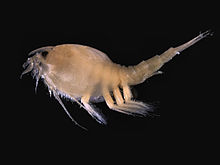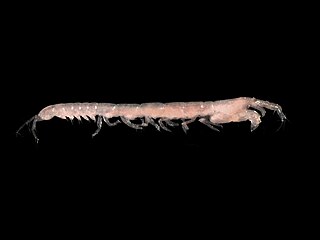
The crustacean order Tanaidacea make up a minor group within the class Malacostraca. There are about 940 species in this order.

Leptostraca is an order of small, marine crustaceans. Its members, including the well-studied Nebalia, occur throughout the world's oceans and are usually considered to be filter-feeders. It is the only extant order in the subclass Phyllocarida. They are believed to represent the most primitive members of their class, the Malacostraca, and first appear in the fossil record during the Cambrian period.

Gammaridea is one of the suborders of the order Amphipoda, comprising small, shrimp-like crustaceans. Until recently, in a traditional classification, it encompassed about 7,275 (92%) of the 7,900 species of amphipods described by then, in approximately 1,000 genera, divided among around 125 families. That concept of Gammaridea included almost all freshwater amphipods, while most of the members still were marine.
Dexaminidae is a family of amphipods. It contains the following genera:

Oedicerotidae is a family of amphipods. It comprises the following genera:

Orchestia is a genus of amphipods in the family Talitridae. Species in Orchestia are parasitized by the Filozoan species Txikispora philomaios.

Leucothoe is a genus of amphipods in the family Leucothoidae. It contains the following species:

Rostrum is a term used in anatomy for a number of phylogenetically unrelated structures in different groups of animals.
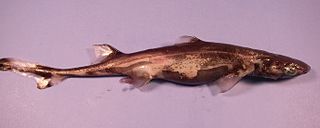
Etmopterus is a genus of lantern sharks in the squaliform family Etmopteridae. They are found in deep sea ecosystems of the Atlantic, Indian and Pacific Oceans.

The Bythograeidae are a small family of blind crabs which live around hydrothermal vents. The family contains 16 species in six genera. Their relationships to other crabs are unclear. They are believed to eat bacteria and other vent organisms. Bythograeidae are a monophyletic, sister taxon of the superfamily Xanthoidea which split to inhabit hydrothermal vents around the Eocene.

Sphaeromatidae is a family of isopods, often encountered on rocky shores and in shelf waters in temperate zones. The family includes almost 100 genera and 619 known marine species. Within these genera, there are groups that share distinctive morphologies; further research may reclassify these genus-groups as separate families.

Eurydice is a genus of isopod crustaceans named after the mythical Eurydice, wife of the musician Orpheus. It includes the following species:
Dahlella caldariensis is a species of leptostracan crustacean which lives on hydrothermal vents in the Pacific Ocean.
Cyclaspis is a genus of cumacean crustaceans in the subfamily Bodotriinae, containing the following species:
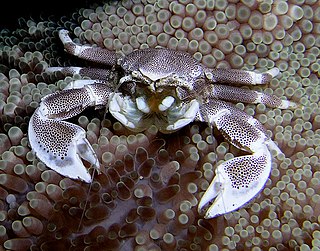
The Galatheoidea are a superfamily of decapod crustaceans comprising the porcelain crabs and some squat lobsters. Squat lobsters within the three families of the superfamily Chirostyloidea are not closely related to the squat lobsters within the Galatheoidea. The fossil record of the superfamily extends back to the Middle Jurassic genus Palaeomunidopsis.

Leucosiidae is a family of crabs containing three subfamilies and a number of genera incertae sedis:
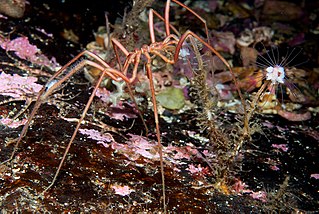
Nymphon is a genus of sea spiders in the family Nymphonidae. The species of sea spiders within the genus Nymphon are all benthic organisms and are found in abyssal and bathyal areas of the ocean. This is a fully marine group and can be found at various depths ranging from the littoral zones to the deep sea. They are found in most major oceans across the globe with a strong distribution around polar regions: Arctic and Antarctic waters. Out of the sea spider genus, Nymphon is the most rich, with a majority of the species within the genis being found in the Southern Ocean region. This genus may also contain bioluminescent species.

Terebellides is a genus of polychaete worms in the family Trichobranchidae.

The clade Multicrustacea constitutes the largest superclass of crustaceans, containing approximately four-fifths of all described crustacean species, including crabs, lobsters, crayfish, shrimp, krill, prawns, woodlice, barnacles, copepods, amphipods, mantis shrimp and others. The largest branch of multicrustacea is the class Malacostraca.

Maeridae is a family of marine amphipods, which was first described by Taudl Krapp-Schickel in 2008.
